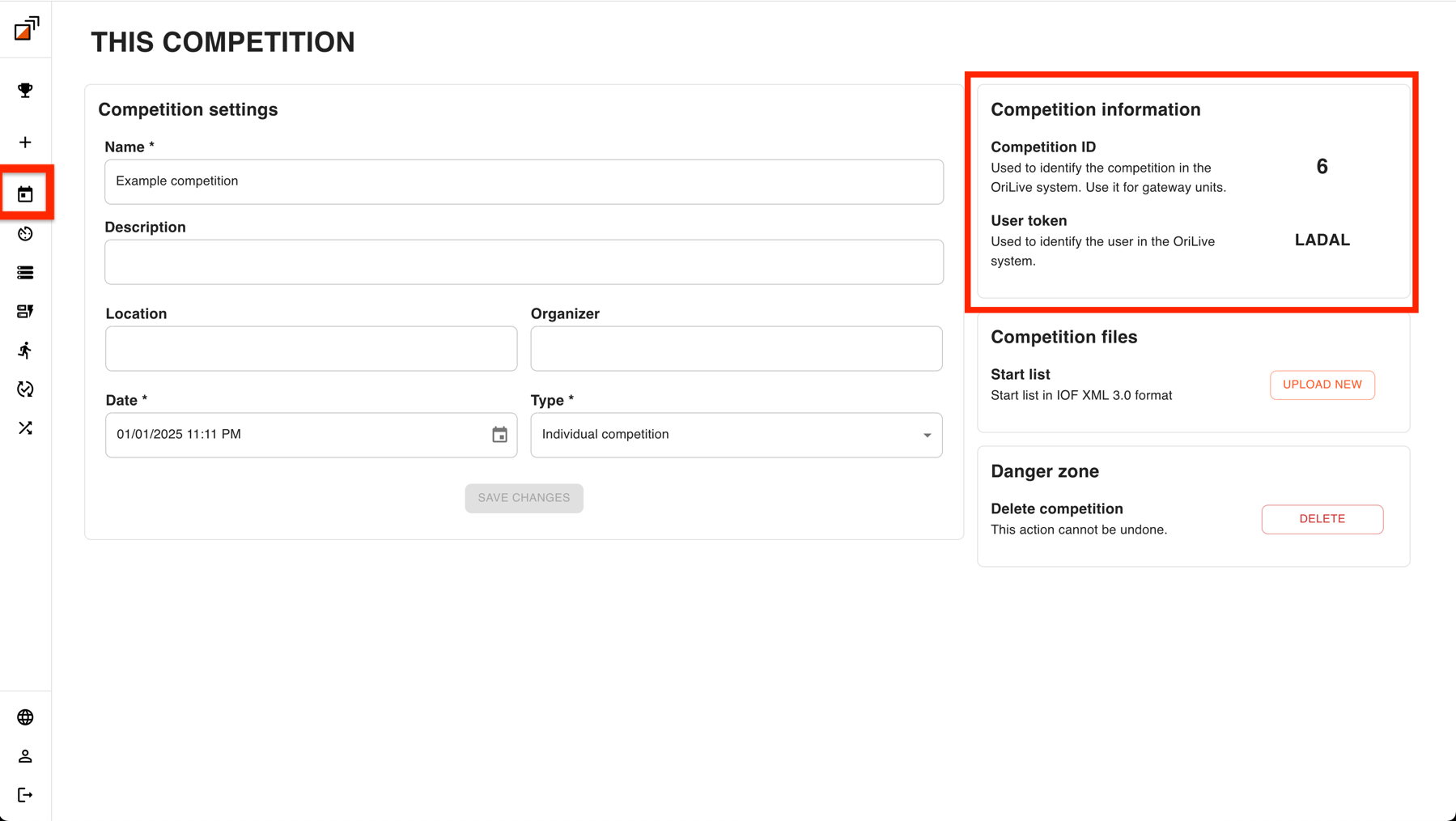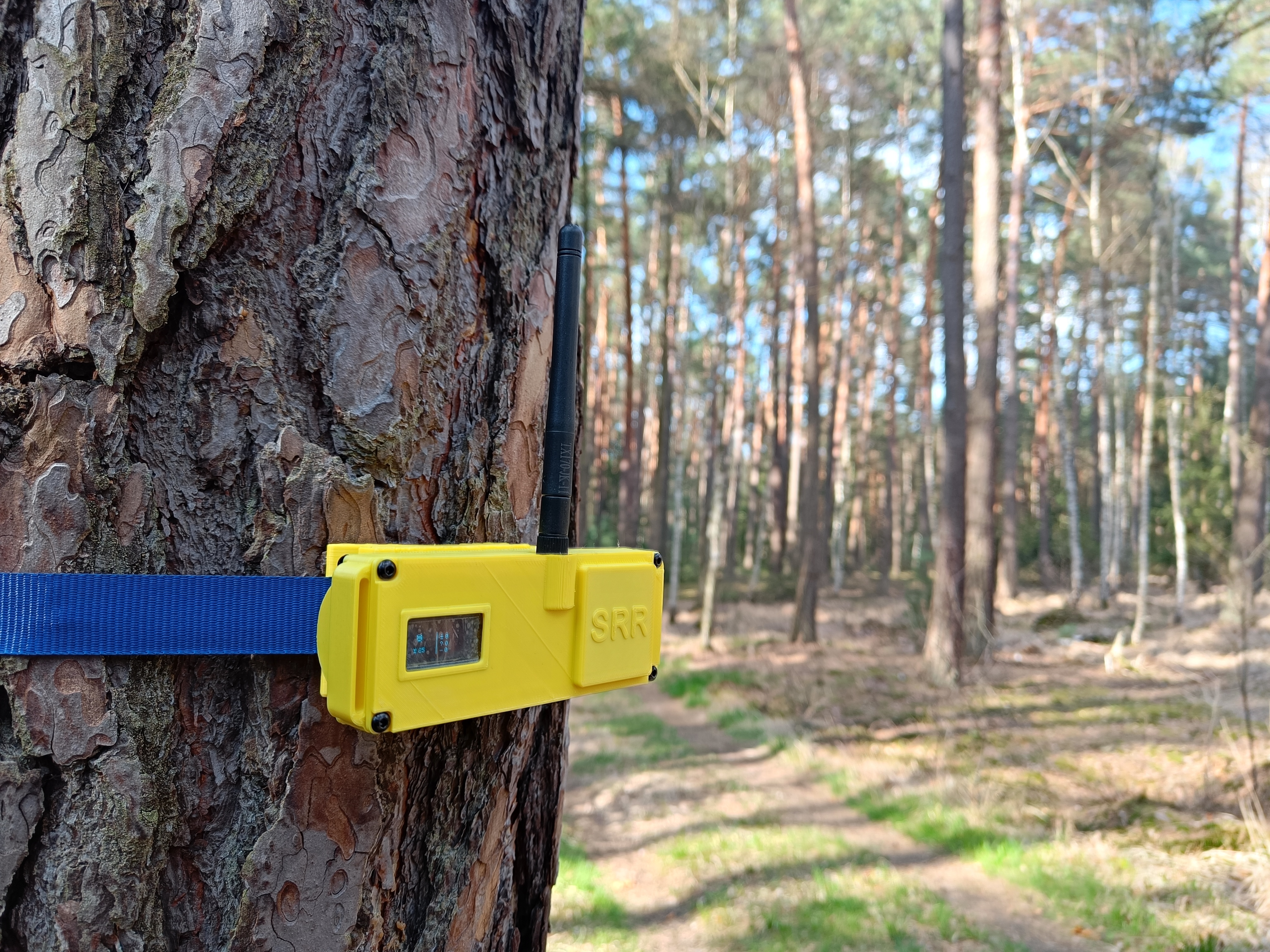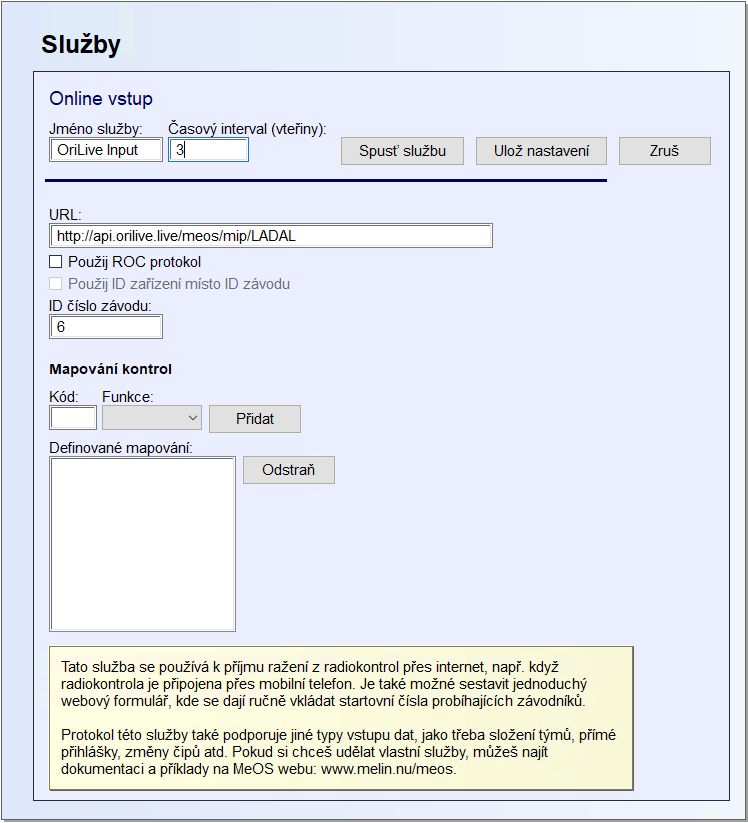How the System Works
Main Goal
The primary goal of the system is to enable tracking of runners through controls during orienteering races. Units connect to the SPORTIdent ecosystem via SRR. The system was designed so that there is no need for mobile operator signals at the control points.
LoRa and OPRP protocols play a key role here. Thanks to them, the units automatically form their own ad-hoc mesh network. In this network, devices can act in two roles - as a node or as a gateway. Node units collect punches, which are then sent through up to 8 hops via the formed network to the gateway, from where the data is uploaded to the server and further processed.
Hardware
O-Node units have been developed for placement at control points. They can function as both node and gateway. They support wireless communication via LoRa (typically 433 MHz), SRR, Bluetooth, and Wi-Fi (used in gateway mode).
The units contain one 18650 Li-Ion battery, lasting approximately 35 hours on a single charge. They can be charged using the USB-C connector on the bottom of the device. They are not waterproof. They can withstand a shower, but it is better to cover the units with plastic in case of expected rain.
The units also feature an OLED display, a sliding power switch, and two buttons. The display shows information about the device's status, with several screens that can be toggled using the middle button. Information includes the unit's network configuration, race ID, punch status, and Wi-Fi connection details.
Pre-Race Preparation
Unit Configuration
Units can be configured via a mobile application using Bluetooth. The following parameters are set (usually, just the race ID needs to be changed before the race):
- Unit ID, which it uses in the LoRa network. Valid values are within 1-254. Unit IDs must be unique.
- Unit type - node or gateway. Both modes allow SRR punch collection. In gateway mode, Wi-Fi access credentials and race ID must also be set.
- (Gateway) Competition ID. This is the ID generated by the system for a specific race (more in the section below). It is necessary to distinguish data between multiple races.
- (Gateway) Wi-Fi access credentials.
- (Gateway) OriLive API address. Typically unchanging. Due to low RAM capacity, communication is unencrypted, via HTTP.
- (Gateway) User token. Found in the panel section for the race or by hovering over the username.
- LoRa SF (Spreading Factor), allowing the adjustment of the data throughput vs wireless range ratio. Valid values are between 6 and 12. The higher the value, the longer the range and lower the data throughput. The ideal value is 8-9; values above 10 should be used only if very few runners and low unit density are expected. If many units are close together, lower SF values are better, as they all communicate on one channel. All units that need to communicate must have the same SF value.
Creating a Competition in the Panel
Before the competition, you need to create its profile in the panel. Log in and select Create new competition. Fill in the name, date, and type in the simple form. You can also add additional information, but it currently has no effect on functionality. After creating the race, you can select it from the list.
Open the race, select This Competition from the side menu. On the right are the race ID and user token information that need to be set in the units.

Placing Units at Control Points
To install the unit in the forest, you need to have the O-Node with an antenna, a mount for attaching to a tree, and a strap. Ideally, place the device as close to the SPORTIdent unit as possible, at least 1.5 meters above the ground. Usually, placing it anywhere within approximately 4 meters of the control is not a problem.
Units should be placed so that the distance between them is no more than 350-450 meters. (However, this depends on the specific terrain; in some locations, connection can be made over more than a kilometer.) The most effective method is to create several networks, each with its own gateway and no more than 2 hops to the gateway - this ensures optimal latency. It is generally best to cover the race center and nearby controls with one gateway at the organizer's tent with Wi-Fi Starlink, and one or two clusters in the forest, each with a gateway with mobile connection. The advantage in the forest is that you can choose a control with good signal for the gateway.


During the Competition
Unit Overview
The status of the units can be monitored in two ways - directly on the unit display and in the web panel. The panel shows a list of all units that have sent their status, their battery status, etc. The panel also displays punches recorded in the last hour.
Integration with MeOS
OriLive supports integration with MeOS. Data from MeOS can be imported via the MeOS Input Protocol (MIP). In MeOS, select Services - Online Input. In the URL field, enter https://api.orilive.live/meos/mip/userToken. Use the competition ID and user token shown in the panel as the race ID.

The recommended method for subsequent upload of split times to services like OResults is from MeOS, via the Online Results service.
Integration with OResults
OriLive also supports direct integration with OResults. In the competition dashboard, select OResults Integration from the side menu. Enter the OResults competition API key and enable sending data to OResults. If you want to disable it, uncheck the checkbox to save the changes.
Conclusion
Ideally, one person should be dedicated to ensuring the operation of the radios during the race. This role combines that of a placer (it is best to place radios right after the standard control placers, once the controls are in place) and IT, as the person also prepares data reception from the API and uploads to platforms like OResults.